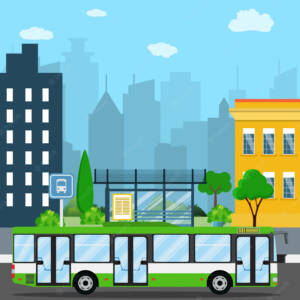Project Report For City Tours and Excursions
Introduction
Project report for city tours and excursions is as follows.
The definition of tourism has evolved through time to the point where it is no longer restricted to places that are immediately associated with travel, such as beaches, mountains, and centers of architecture, culture, and history. There are several cities with a negative reputation for tourism; tourists rarely visit these cities for tourism-related reasons.
However, given their age and development over the years, these cities invariably have certain tourist attractions. Examples of such cities are Ahmedabad, Surat, Indore, Bhopal, Raipur, Bhubaneshwar, Lucknow, Kanpur, Hyderabad, Coimbatore, Guwahati, and Patna. These cities get a lot of daytrippers and overnight guests, mostly for “business” reasons. They also draw substantial amounts of traffic for other uses like social gatherings, healthcare, and education.

Additionally, there is a constant flow of domestic travellers to these cities from both inside and outside of India. Offering these visitors short excursions outside the city and city tours has a tonne of potential. Another significant source of revenue is the flow of foreign tourists.
In reality, many locals like doing such tours and excursions, whether they are travelling alone or with visitors. This is due to the fact that some of them, despite knowing about local attractions, require encouragement and/or practical planning to visit such attractions.
Project Report Sample On City
Tours and Excursions
Get Completely Custom Bankable Project Report
The promoter must grasp the city’s tourist attractions as well as what will draw tourists, visitors, and locals. A critical asset for the promoter is the ability to create and market packages. He must also be skilled in managing human resources, including drivers, guides, and other project support personnel.
Market Potential Of City Tours and Excursions
The global city tours/tourism market is expected to surpass $8.9 trillion by 2026, rising at a CAGR of more than 3.1% between 2021 and 2026.
Expenses

Product Cost Breakup

Reveneue Vs Expenses

Market Trend

The majority of the cities indicated above have a daily tourist influx of 20,000 to 50,000 persons, including overnight guests. Even if their major motive for visiting is not tourism, some of these travellers are interested in seeing tourist attractions and popular locations—business, social events, shopping, home-town visits, religion, recreation, education, and healthcare.
The popular location may not be a standard tourist attraction; instead, it may be a modern urban development element, such as a riverfront or a metro line, or a more traditional feature, such as a gathering area for people to eat street food.
The reason that tourists are discouraged from visiting tourist attractions is that, if they were to do it on their own, they would have to spend more time and money, endure inconvenience, and, in all likelihood, do it without a guide. Since these cities are not popular tourist attractions, there are no accessible and reasonably priced guides.
In other words, the tourists either abandon the notion of taking a city tour or visit, in most cases, just one or two locations on their own. Such guests would be interested in the idea of a well-planned package with a predetermined itinerary, timetable, dependable transportation, and knowledgeable guide. Locals will also use such a facility for visitors; it improves the guest experience while lowering the host’s workload.
In major cities all throughout the world, walking tours are well-liked. From discerning tourists and locals alike, a guided walking tour would elicit a clear, albeit modest, response. These walking excursions would be planned with the weather and time of day in mind (traffic conditions). They receive a respectable response because they are only two hours long and require no more than, oh, three kilometres of walking.

